How to Connect Ethernet Cable to a Laptop Without an Ethernet Port: A Step-by-Step Guide
Have you ever found yourself needing a stable wired internet connection for your laptop, only to realize it lacks an Ethernet port? You’re not alone. Many of today’s sleek ultrabooks sacrifice Ethernet ports to maintain a slim profile. But fear not—connecting to a wired network isn’t as daunting as it seems.
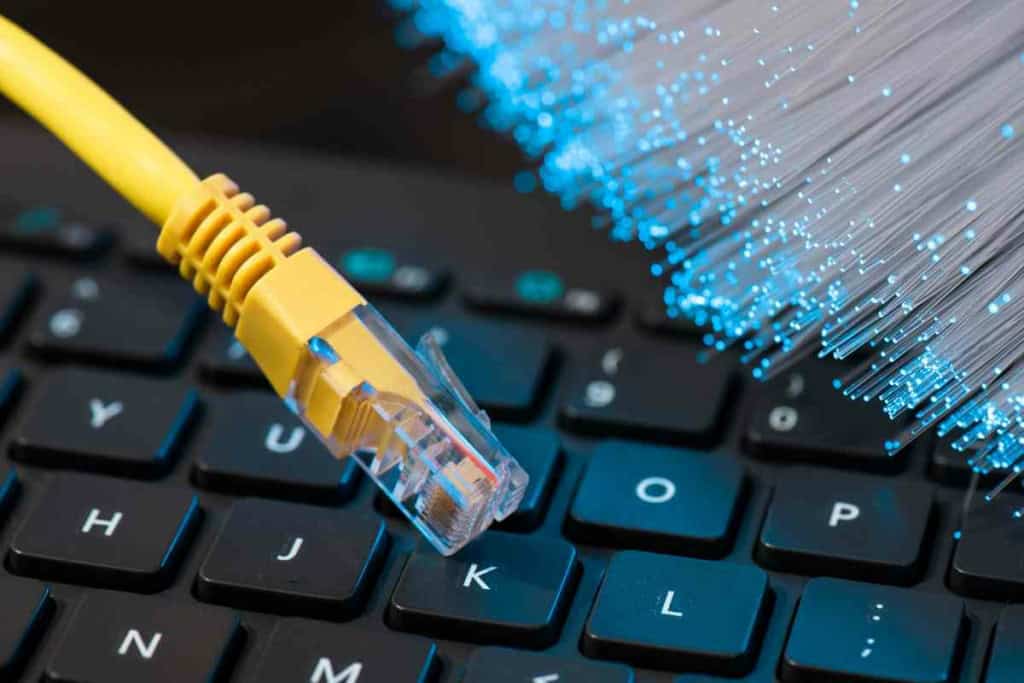
Related Post! Why Is My WiFi Faster Than My Ethernet?
How Do You Connect An Ethernet Cable To A Laptop Without An Ethernet Port?
To connect an Ethernet cable to a laptop without an Ethernet port, use a USB Ethernet adapter. Simply plug the adapter into your laptop’s USB port, connect the Ethernet cable from the adapter to your router, and follow any on-screen prompts to complete the setup and establish the connection.
These handy devices bridge the gap between your laptop’s USB or Thunderbolt port and an Ethernet cable. They’re portable, easy to use, and an essential tool for anyone needing reliable internet access while on the move.
How to Connect Your Laptop to an Ethernet Cable Using an Adapter
- Choose Your Adapter: Identify whether your laptop has USB or Thunderbolt ports and select an adapter that matches. USB adapters are more common and usually suffice for typical broadband speeds.
- Plug and Play: Most adapters are plug-and-play, meaning they require no additional installation. Simply connect the adapter to your port and plug in the Ethernet cable.
- Verify the Connection: Check your network settings to ensure the wired connection is active. Sometimes, you might need to disable Wi-Fi to prioritize Ethernet.
Troubleshooting Tips
Encountering issues? Here’s what you can do:
- Check the Adapter: Ensure it’s fully plugged in—both to your laptop and the Ethernet cable.
- Restart Your Device: This can resolve many connectivity issues.
- Update Drivers: If your adapter isn’t recognized, downloading the latest drivers from the manufacturer’s website often helps.
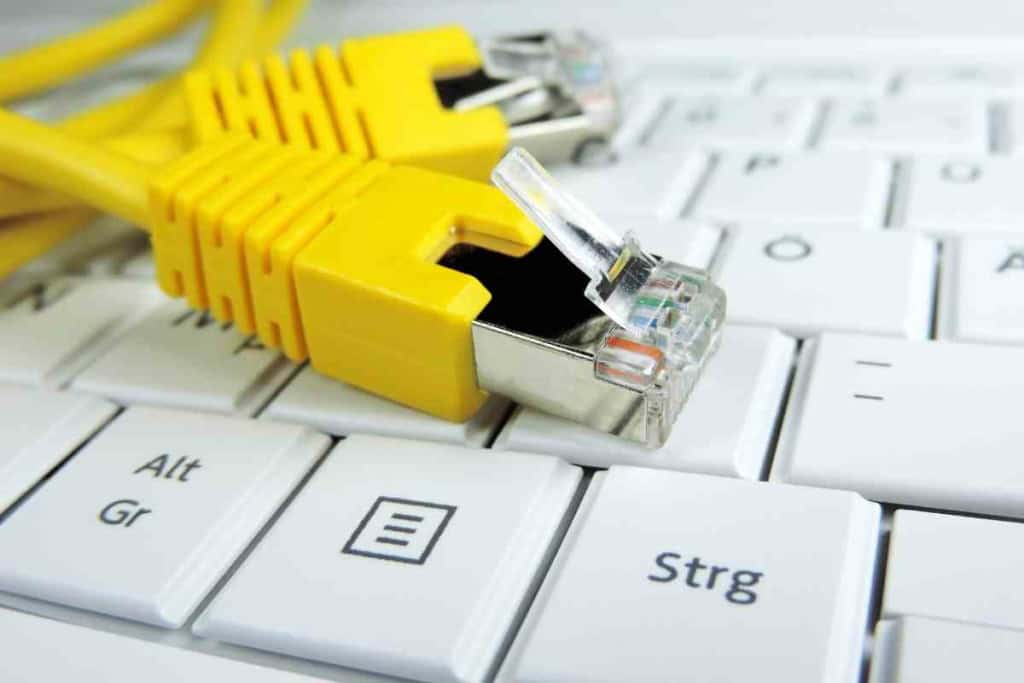
Understanding Ethernet Connections
Related Post! Does The PS5 Have An Ethernet Port?
Ethernet technology allows high-speed data transfer through physical cables, offering speeds from 10 Mbps to a whopping 100 Gbps. Most home networks operate at 1 Gbps, more than enough for video streaming, large downloads, and more. Ethernet cables come equipped with RJ45 connectors, a standard in wired networking.
What Are the Benefits of Ethernet?
- Stability: Less susceptible to interference than Wi-Fi.
- Speed: Offers consistently high speeds.
- Security: More secure than wireless connections.
Why It Matters
Choosing the right Ethernet adapter makes all the difference. Whether you’re a gamer needing low latency, a traveler looking for secure connections, or someone setting up a home office, an Ethernet connection can significantly enhance your online experience.
By following these steps and using the right tools, you’ll find that accessing a wired network connection is simpler than you think. Ready to enjoy a faster and more stable internet connection? Your next step is just an adapter away.
Why Use an Ethernet Connection?
In today’s wireless world, the idea of connecting to the internet via an Ethernet cable might seem a bit old-fashioned. However, there are compelling reasons to choose a wired connection over Wi-Fi, especially for those requiring reliability and security in their internet usage.
Advantages of Ethernet
- Speed and Stability: Ethernet provides superior speed and stability compared to Wi-Fi. It’s not prone to interference from other devices, which means smoother streaming, faster downloads, and reduced latency.
- Security: An Ethernet connection is inherently more secure than Wi-Fi. Data on an Ethernet network travels through a cable, which drastically reduces the chances of interception by hackers, a crucial consideration for protecting sensitive information.
- Gaming: For gamers, the fast, stable connection offered by Ethernet can dramatically improve the gaming experience by minimizing lag and connection drops.
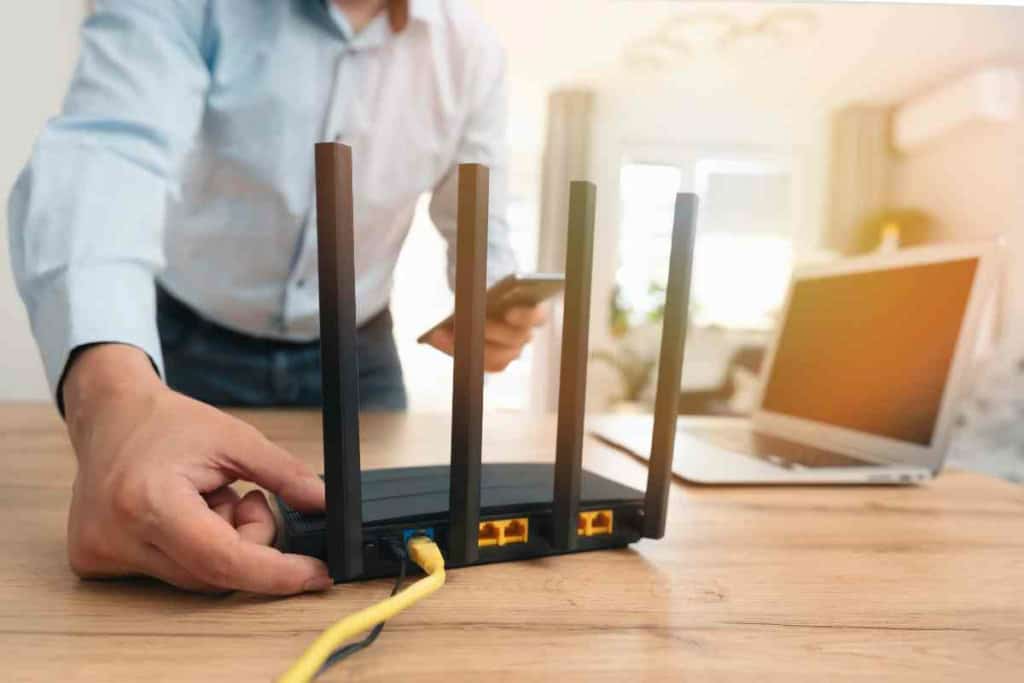
Navigating the No-Port Conundrum
As laptops become sleeker and more portable, many are shedding bulky ports, including the traditional Ethernet port. This might seem like a setback, but there are several effective workarounds to ensure you can still enjoy the benefits of a wired connection.
Related Post! How To Connect A TV To WiFi Without An Adapter
Connecting Your Laptop to Ethernet Without a Built-In Port
- USB Ethernet Adapter: This is a simple, cost-effective solution. The adapter connects to your laptop’s USB port, allowing you to plug in an Ethernet cable directly. These adapters are generally plug-and-play, requiring no additional software.
- Thunderbolt Ethernet Adapter: Ideal for users with newer MacBooks or PCs that include Thunderbolt ports. These adapters offer higher speeds and more reliability than USB adapters, though they come at a higher cost.
- Docking Stations: For those who need multiple connections, a docking station might be the best solution. They not only provide Ethernet ports but also expand your laptop’s connectivity with additional USB ports, display ports, and more.
- Built-in LTE: A more modern solution for constant connectivity is built-in LTE. This option uses cellular networks to access the internet and is perfect for those without access to reliable Wi-Fi or Ethernet. Keep in mind, this requires a separate data plan.
Adapters as a Solution
In the era of increasingly compact laptops, losing the Ethernet port is common, but connectivity needs remain. Adapters offer a practical solution, bridging the gap between your laptop and a wired network. Let’s explore the options that can help you stay connected efficiently.
Understanding USB to Ethernet Adapters
USB to Ethernet adapters are the quintessential choice for those needing a straightforward, portable solution to connect to wired networks. These devices are compact, with one end plugging into your laptop’s USB port (either USB-A or USB-C) and the other offering an Ethernet port. Here’s how to choose the right one:
- Compatibility: Ensure the adapter matches your laptop’s USB type. USB-A adapters work with most traditional laptops, while USB-C adapters cater to newer models. Note: Not all USB-C ports support Ethernet, so double-check your laptop’s capabilities.
- Data Transfer Speed: Consider the adapter’s speed capabilities. USB 2.0 models are adequate for basic tasks, but for high-speed data transfer, a USB 3.0 adapter is preferable, offering significantly faster speeds which are ideal for streaming, gaming, and large downloads.
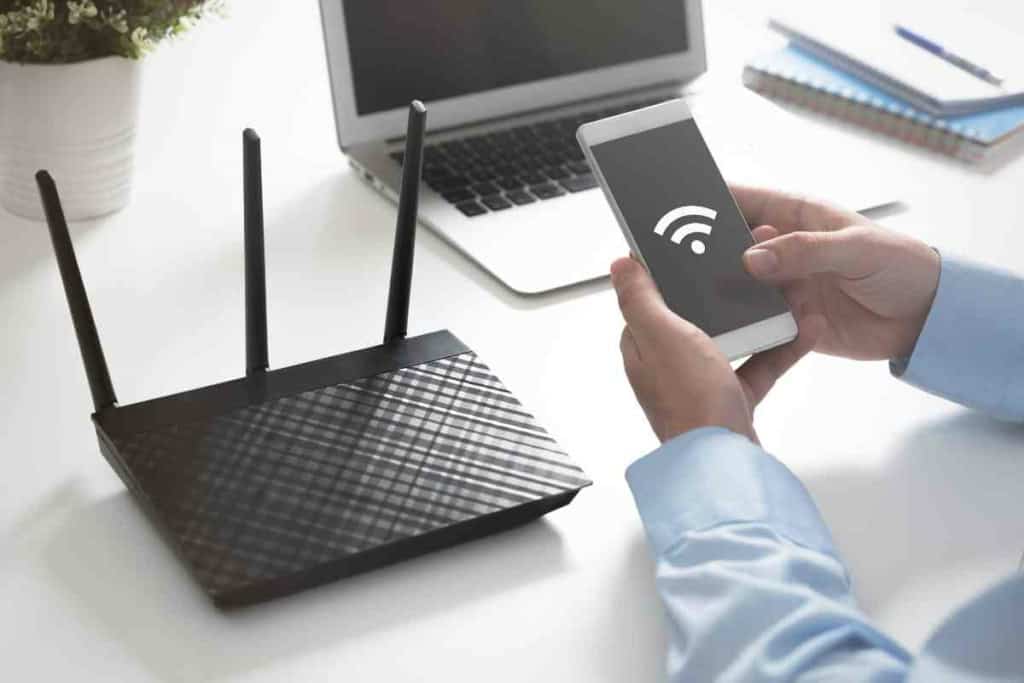
The Versatility of Docking Stations
If you require more from your setup than just internet access, docking stations are an excellent investment. Though pricier than USB adapters, they provide extensive connectivity:
- Extended Connectivity: Docking stations often feature multiple USB ports, HDMI outputs, and sometimes even SD card slots, making them ideal for a comprehensive workstation setup.
- Types of Docking Stations: Choose between USB-C and Thunderbolt models based on your laptop’s ports. Thunderbolt stations offer the highest data transfer rates and are perfect for high-end graphic outputs and rapid file transfers.
- Additional Features: Many docking stations also charge your laptop and connect to several peripherals simultaneously, such as external monitors and keyboards, enhancing both functionality and convenience.
Related Post! What Is The Difference Between WiFi And Bluetooth?
Choosing the Right Adapter for Your Needs
To ensure you select the best adapter or docking station, consider these factors:
- Compatibility: Check if the adapter is compatible with your laptop’s ports and operating system, whether Windows or macOS.
- Performance: Opt for gigabit Ethernet support if you have a high-speed internet connection. This is crucial for activities that demand a lot of data bandwidth, such as video conferencing or HD streaming.
- Portability: If mobility is a priority, look for compact, lightweight adapters that are easy to carry in a laptop bag or even your pocket.
- Additional Functions: For those who use multiple devices, a docking station with various ports can simplify your connectivity needs without sacrificing performance.
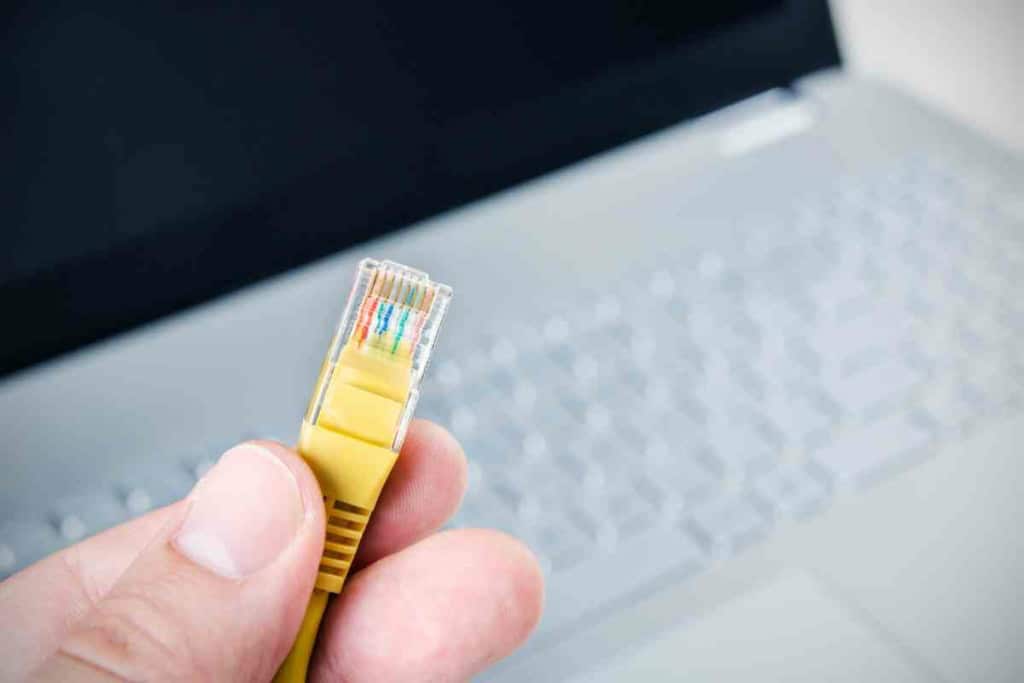
How to Connect Ethernet Cable to Laptop
Facing challenges while trying to connect your laptop to an Ethernet cable? Fear not. This guide will walk you through the process of using an Ethernet adapter to establish a stable and reliable internet connection. Let’s dive in!
Installing Adapter Drivers
Before connecting your Ethernet cable, you must install the necessary drivers that help your laptop recognize the Ethernet adapter.
- Using the Installation CD:
- Insert the CD that comes with your Ethernet adapter into your laptop’s CD drive.
- Follow the on-screen instructions to install the drivers.
- Downloading Drivers Online:
- If your laptop lacks a CD drive, visit the manufacturer’s website to download the appropriate drivers.
- Download and execute the driver setup file, and follow the installation prompts.
Connecting to the Network
Once the drivers are installed, you’re ready to connect your laptop to the network.
- Connect the Ethernet Cable:
- Attach one end of the Ethernet cable to the Ethernet port on your adapter.
- Connect the other end to a port on your router or modem.
- Initiate the Connection:
- Power on your laptop and allow it a moment to detect the Ethernet adapter.
- Navigate to your network settings and select the Ethernet connection from the list of available networks.
- If required, enter the network password to establish the connection.
After these steps, your laptop should be successfully connected to the network via Ethernet, providing a more stable and secure connection compared to Wi-Fi.
Troubleshooting Common Issues
Even with the right setup, you might encounter some hurdles. Here are solutions to common issues:
- Connection Interruptions:
- Improve Signal: Ensure your laptop is within a good range of your router to avoid weak signals.
- Reduce Interference: Keep devices that may cause interference, like microwaves and cordless phones, away from your laptop and router.
- Router Restart: Sometimes, simply restarting your router can resolve network congestion issues.
- Preference Settings:
- Adjust Network Settings: Access your laptop’s network settings and prioritize the Ethernet connection over Wi-Fi.
- Disable Wi-Fi: Temporarily turn off Wi-Fi to prevent it from overriding your Ethernet connection.
- System Restart: Reboot your laptop to apply new settings and resolve any residual configuration issues.
By following these detailed instructions and troubleshooting tips, you can effectively manage and maintain a robust Ethernet connection, enhancing your internet experience significantly. Whether you’re streaming, gaming, or just browsing, an Ethernet connection can offer the speed and reliability you need.
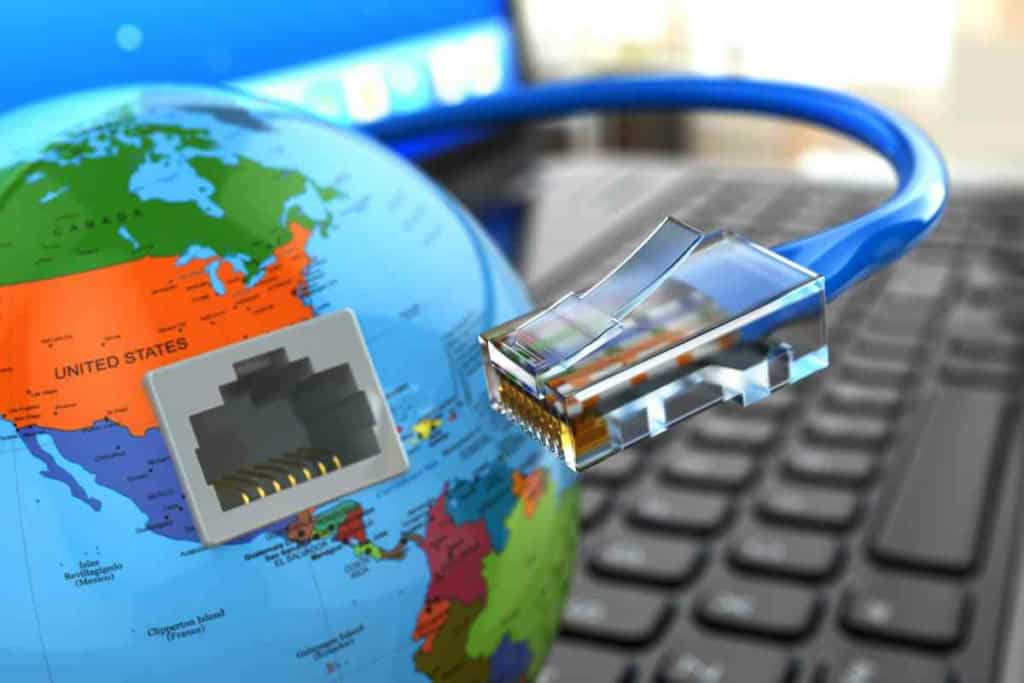
Conclusion
In conclusion, connecting an Ethernet cable to a laptop without an Ethernet port is not impossible. With the right tools and steps, you can easily establish a wired connection to your laptop.
Firstly, ensure that you have the necessary tools such as a USB to Ethernet adapter, an Ethernet cable, and a modem. Secondly, follow the steps outlined in this article to set up the connection.
It is important to note that the speed and bandwidth of your connection may be affected by using an adapter. However, this should not be a major concern as the difference in speed is usually negligible.
Furthermore, it is essential to ensure that your laptop is compatible with the adapter you choose. Windows 10 users can easily check for compatibility by visiting the manufacturer’s website or checking the product specifications.
Overall, establishing a wired connection to your laptop without an Ethernet port is a simple process that can be achieved with the right tools and steps.